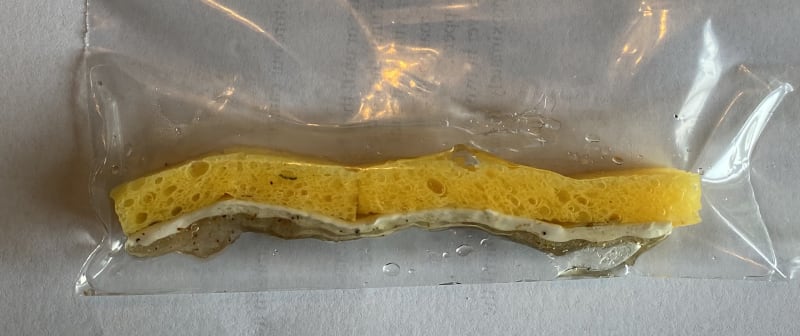

I am working on developing biodegradable environmental sensors from RFID-based technology. These sensors can be deployed in an area where they will expand to full size and be able to measure certain environmental parameters.
In particular, they can be emplaced under a thin layer of soil and measure the concentration of specific ions. As a farmer passes over the sensors, they will give real-time in situ readings of the nutrient levels in the field, allowing the fertilizer levels to be adjusted immediately. This differs from current methods which require soil samples to be sent to a lab and can't account for the impact of how moisture and other factors may impact nutrient levels.
In situ measurement of these soil nutrients will prevent over-fertilization that is both expensive to the farmer and harmful to the environment, particularly as excess fertilizer adds nutrients to natural water sources. These additional nutrients cause excessive growth of plants and algae, choking out fish and destroying water and food sources for other forms of wildlife.
These sensors do not contain batteries and are made entirely from biodegradable or bioneutral materials. Because they start out the size of an acorn, they can be easily distributed and could last for one or more growing seasons. After they stop functioning, they do not need to be collected and will break down over time into materials that will not have a negative impact on the environment or affect crop quality.
These sensors also have potential to measure other environmental values outside of soil properties. The sensors are deployed when they come in contact with water, so they have the potential to measure water and air quality once deployed. These sensors would be of interest to anyone who farms, providing a low cost and more useful measurement of soil conditions. Since they can also be used to monitor environmental conditions, they would be useful to land owners, environmental scientists, or gardeners.
The illustrations include images of proof of concept devices that were created and tested. These example devices demonstrated that the sensors could be deployed through the use of biodegradable materials and could communicate after deployment. The first illustration is the device prior to deployment. They are approximately the size of an acorn. The second illustration shows a device that has been fully deployed when brought in contact with 15 mL of water. The device was still functional and could still communicate after deployment.
Additional steps for the final design and manufacture include adding sensing modalities, simulating and optimizing device design (both mechanically and electromagnetically), and creating a streamlined manufacturing process. The process would involve development of a custom roll-to-roll manufacturing process that automates creation of tag layers. Once the sensors have been properly encapsulated, the final device could be assembled using a press designed to create the correct folding structure. The final step would be an automated encapsulation, possibly done by a brushing process that coats the completed sensors.
-
Awards
-
 2022 Electronics/Sensors/IoT Honorable Mention
2022 Electronics/Sensors/IoT Honorable Mention -
 2022 Top 100 Entries
2022 Top 100 Entries
Like this entry?
-
About the Entrant
- Name:Cherish Bauerreich
- Type of entry:individual
- Patent status:none





